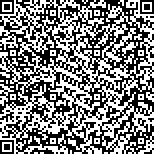唐志明,温红梅,许自阳,等.喉镜吞咽功能评估指导气管切开合并吞咽障碍患者拔管的应用分析[J].中华物理医学与康复杂志,2020,42(10):886-889
扫码阅读全文

|
| 喉镜吞咽功能评估指导气管切开合并吞咽障碍患者拔管的应用分析 |
|
| |
| DOI:10.3760/cma.j.issn.0254-1424.2020.10.005 |
| 中文关键词: 气管切开 神经性吞咽障碍 拔管 喉镜吞咽功能评估 残留 误吸 声门活动异常 |
| 英文关键词: Tracheotomy Neurodysphagia Dysphagia Decannulation Endoscopy Swallowing Residues Aspiration Glottis activity |
| 基金项目:国家自然科学基金项目(81472153,81401872) |
|
| 摘要点击次数: 6613 |
| 全文下载次数: 7769 |
| 中文摘要: |
| 目的 探讨喉镜吞咽功能评估(FEES)在指导气管切开合并神经性吞咽障碍患者拔管中的作用。 方法 回顾性分析2017年至2019年期间在中山大学附属第三医院康复科住院并行气管切开的188例神经性疾病(合并吞咽障碍)患者FEES评估结果,同时分析FEES评估指标(包括声门活动是否正常、咽部分泌物分级及残留、渗漏-误吸评级等)对拔管成功与否的影响。 结果 入选患者根据拔管情况分为拔管成功组及拔管失败组。拔管成功组共有患者109例,拔管失败组共有患者79例,拔管成功率为57%;拔管成功组气管切开平均病程(184 d)较拔管失败组平均病程(292 d)明显缩短(P<0.05)。拔管失败组患者声门异常占比(55.0%)较拔管成功组异常占比(20.8%)明显增高(P<0.05);拔管成功组咽部分泌物分级、渗漏-误吸分级均显著低于拔管失败组水平(P<0.05);拔管成功组与拔管失败组患者在食物残留方面未见明显差异(P>0.05)。 结论 FEES评估指标(包括声门活动、分泌物残留、进食误吸情况等)在指导神经性吞咽障碍患者气管切开套管拔管过程中具有重要作用。 |
| 英文摘要: |
| Objective To explore the value of flexible endoscopic evaluation of swallowing (FEES) in guiding the decannulation of neurological disease patients with dysphagia after a tracheotomy. Methods The FEES results of 188 neurological disease patients with dysphagia who had undergone a tracheotomy were analyzed retrospectively. The utility of FEES evaluation indexes (including glottis activity, the classification of pharyngeal secretions and residues as well as penetration-aspiration grade) for predicting the success of decannulation was explored. Results One hundred and nine of the patients (the success group) were decannulated successfully and 79 (the failure group) were not, a success rate of 57%. The abnormal glottis activity rate among the failure group was 55%, significantly higher than among the success group (21%). The pharyngeal secretion classifications and penetration-aspiration grades among the success group were also significantly lower than among the failure group, on average. The average course of recovery from the tracheotomy was 184 days in the success group, significantly shorter than that of the failure group (292 days). No significant differences in residues were observed. Conclusion The glottis activity, secretions and intake aspiration evaluated using FEES are of great value for guiding the decannulation of neurological disease patients with dysphagia after a tracheotomy. |
|
查看全文
查看/发表评论 下载PDF阅读器 |
| 关闭 |